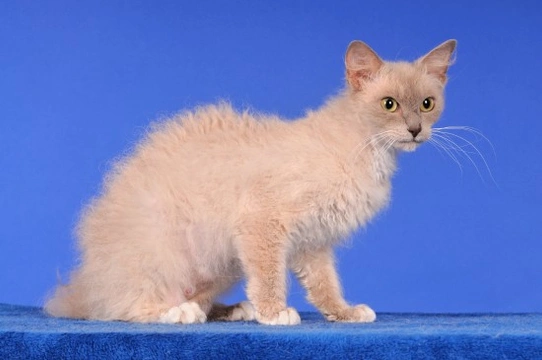
All about LaPerm cats in the UK, and what is required for pedigree registration
The LaPerm cat is a curly-coated cat of the Rex type, which has a distinctive and highly attractive appearance thanks to their unique coats. Their fur tends to be comprised of soft curled waves rather than tight curls, although the curls are rather more spring-like on the belly. Their. name comes from the appearance of the fur being somewhat like that of a shaggy permanent wave!
The breed originated in the USA, but quickly became popular across the world as one of the more desirable Rex cat breeds. However, they are not related to any of the other various Rex cat types, and their curled coat is due to the presence of a dominant gene that has caused the rapid spread of the coat type thanks to selective breeding. They are also notably considered to be a good choice of cat for people with low-level cat allergies, as they do not shed particularly heavily.
The first LaPerm cats were produced during the 1980’s due to a spontaneous gene mutation that led to the curled coat to appear within the kittens. Their distinctive and unusual appearance and very affectionate personalities soon led to great demand for the breed, and they are now firmly established in most Western countries.
While the LaPerm cat is recognised as a pedigree breed in its own right with TICA (The International Cat Association) and the GCCF (Governing Council of the Cat Fancy) registration requirements for cats of the breed are particularly strict within the UK, and not all cats produced from LaPerm parentage are eligible for formal breed registration.
In this article we will look in more detail at the background of the LaPerm cat in the UK, and what is required for pedigree breed registration of the LaPerm. Read on to learn more!
LaPerm cats entry to the UK
The first LaPerm cat to be brought to the UK only arrived in 2002, and was a lilac tortie and white longhaired cat who was a USA-bred champion, named Uluru Omaste Po. When she arrived in the UK, she was already pregnant, and produced five kittens upon arrival in the country, which went on to found the first LaPerm breed line within the UK.
Further LaPerm cats were later imported from other European countries, America, and New Zealand, in order to firmly establish the first British LaPerm breed lines and ensure genetic diversity within the breed. The LaPerm breeding programme in the UK is characterised by efforts to outcross the lines widely in order to spread the LaPerm gene, and ensure that existing breed lines do not suffer from inbreeding. Due to the fact that the curly coated gene within the LaPerm is a dominant one, this programme has been widely successful.
Today, the UK is considered to have the largest LaPerm breeding programme worldwide, and was awarded provisional recognition with the GCCF in 2008. 2012 saw the breed gain full recognition for championship status, and the breed is widely represented in the UK by the LaPerm Cat Club, which holds regular breed shows.
LaPerm pedigree registration
Worldwide, the LaPerm breed is now recognised by most major breed registries, all of which have their own standards for what constitutes a pure bred, pedigree LaPerm.
Here in the UK where the GCCF is the ruling body for pedigree cat registration, the rules on what constitutes a pedigree LaPerm cat are the strictest of any international registry.
In order for a LaPerm cat to be recognised as a pedigree with the GCCF, the cat must have a full, verifiable LaPerm pedigree of three generations, consisting of full LaPerm cats and no outcrossings. Generations four and five of the ancestry of any LaPerm must also consist of either LaPerm cats, or cats from within set lists of approved outcrossing breeds. Any cat who does not fulfil the five generation pedigree required, or which has any other Rex-type genes or non-pedigree cats in their ancestry are not eligible for registration.
However, in order to ensure the diversity of the LaPerm gene pool and enable the required outcrossings to maintain the breed in good health, a supplementary LaPerm registry is also held, which permits the registration of LaPerms that will potentially, in subsequent generations, breed registry eligible cats, even if they are not classed as fully eligible themselves.
This supplementary registry is aimed at LaPerm cats with more recent permitted outcrossings in their ancestry, which have been produced by means of outcrossing with accepted breeds.
The breeds that are permitted and recognised for outcrossings with the LaPerm for the supplementary list are:
- Abyssinian
- Tiffanie
- Burmese
- Ocicat
- Tonkinese
Previously, the Old-Style Siamese, Balinese and Oriental cat breeds were also permitted outcrossings, but these breeds have since been removed from the acceptable outcrossings list.



